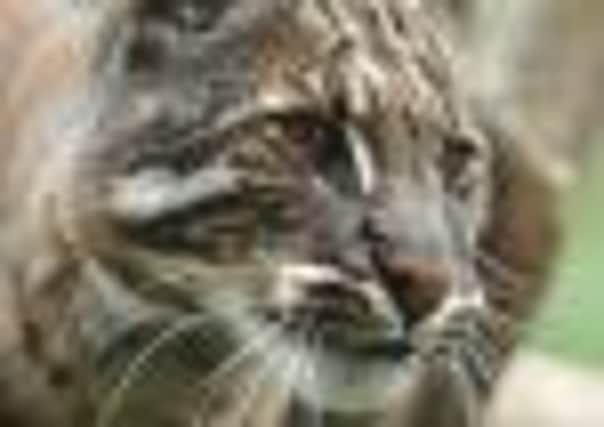Zoo’s big cat is first animal to undergo pioneering technique


Vets were forced to take action when Ipoh – a two-year-old Asian Golden Cat – showed no signs of improving.
Preliminary examinations had showed small cysts in some organs, but offered no explanation as to what they were or how to treat them.
Advertisement
Hide AdAdvertisement
Hide AdExperts earlier this week carried out a liver and kidney biopsy to investigate further, using a pretzel-shaped surgical instrument – the PretzelFlex – which has never before been used on an animal.


Romain Pizzi, a veterinary surgeon for the Royal Zoological Society of Scotland based at the zoo, said: “I am pleased to say the whole procedure was a great success and we hope to get Ipoh back to full health soon.
“Over the last few months Ipoh has lost weight, behaved more quietly and has had a dull, poorly groomed coat which led us to believe he was ill.”
The pioneering technology allowed Mr Pizzi to fully explore all Ipoh’s abdominal organs and he will now examine whether the cat – one of three housed at the zoo – has polycystic disease.
Advertisement
Hide AdAdvertisement
Hide AdShortly after surgery Ipoh was up, behaving normally and went on to enjoy his evening meal – something which would not have been possible if the procedure had not been carried out using keyhole techniques.
Such surgery is routine in humans, yet the standard procedure in animals is still open abdominal surgery.
Working under the direction of Simon Girling, head of the veterinary service, surgeon Romain Pizzi has performed over 500 minimally invasive surgical procedures on zoo and wildlife species ranging in size from 20 grams to almost a tonne.
Two years ago, he became the first vet to carry out life-saving keyhole surgery on a reindeer.
Advertisement
Hide AdAdvertisement
Hide AdAsian Golden Cats are native to south Eastern Asia. About three times bigger than a domestic cat they are distinct by their golden colour and spotting.
They are classified as “near threatened” by the International Union for the Conservation of Nature, are solitary animals and face threats from hunting for their fur, and habitat loss due to rapid deforestation occurring over large areas of their habitat.
According to mythology in some areas of Thailand, the burning of Asian Golden Cats’ fur is supposed to drive tigers away, and they are called Seua fai, meaning “fire tiger”. Some believe that even carrying a single hair has the same effect.